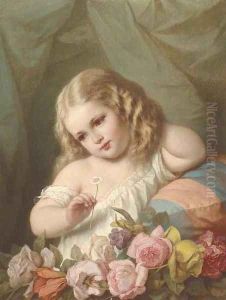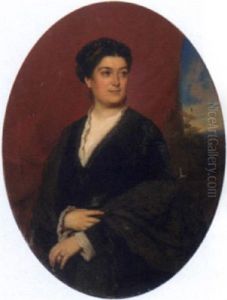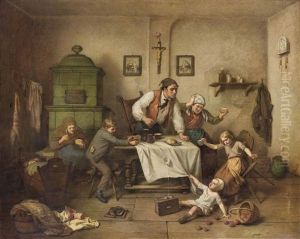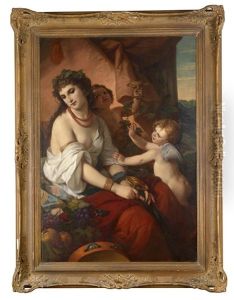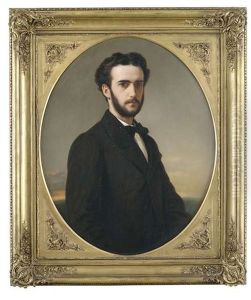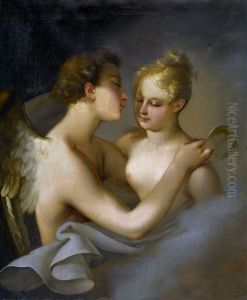Johann Grund Paintings
Johann Grund was an Austrian painter known primarily for his landscape paintings. Born on the 28th of February 1808 in Vienna, Austria, Grund began his artistic training at the Academy of Fine Arts Vienna, where he studied under the guidance of landscape painters such as Josef Mössmer and Franz Steinfeld, who were prominent figures in Austrian art of the time.
During his career, Grund developed a style that was deeply influenced by the Biedermeier period, a term that describes the artistic styles that flourished in the German-speaking countries of Europe during the period of 1815 to 1848. The Biedermeier period was characterized by a sense of order, intimacy, and a focus on the beauty of the natural world and domestic life. Grund's landscapes often depicted the Austrian countryside and were celebrated for their detailed and idyllic representations of nature.
Although not as widely known as some of his contemporaries, Grund's work was appreciated for its contribution to the Austrian landscape painting tradition. His paintings were characterized by a fine attention to detail and a tranquil, almost poetic quality. He captured various times of the day and seasons with a particular sensitivity to light and atmosphere. This was in line with the Romantic movement's emphasis on the emotional response to the natural world.
Throughout his life, Grund exhibited his works in various art shows and gained recognition within the Austro-Hungarian Empire. After a long career, Johann Grund passed away on the 19th of April 1887 in his hometown of Vienna. Today, his works can be found in various art collections and museums, contributing to our understanding of the 19th-century European art historical landscape.

